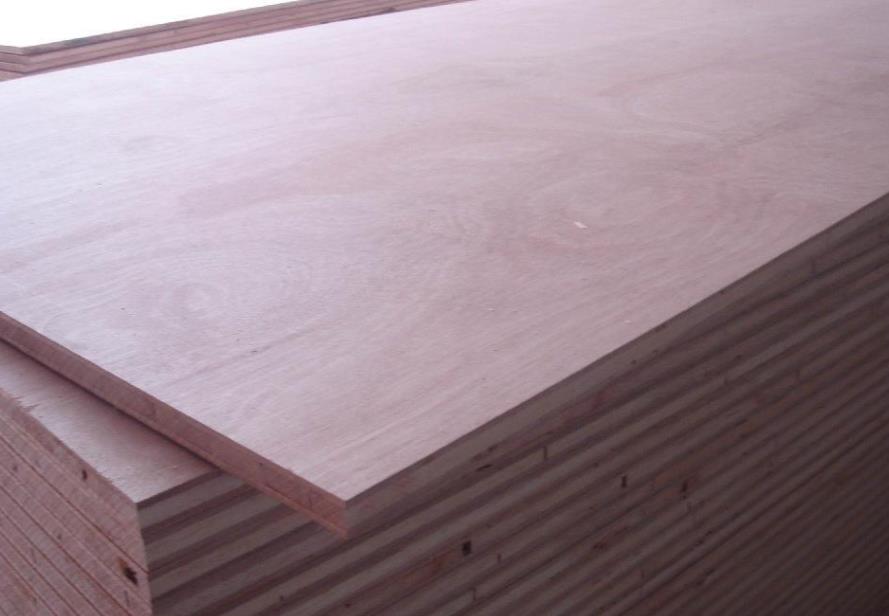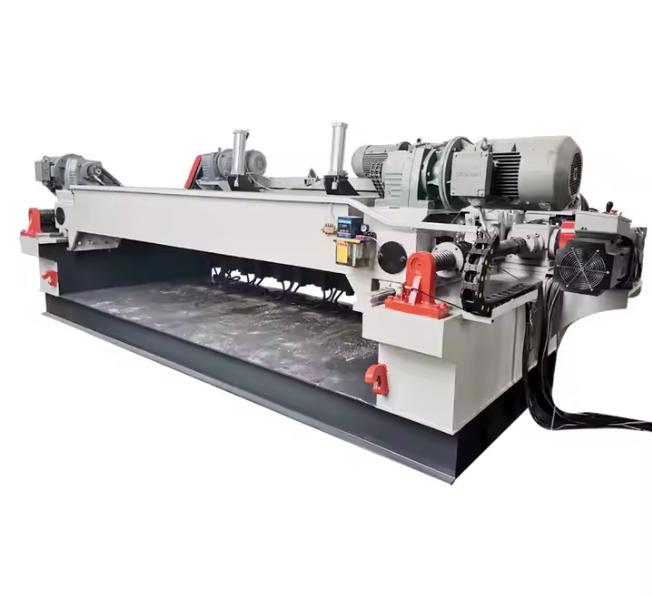In plywood production enterprises, veneer rotary cutting machines play a crucial role. However, due to various reasons, the veneer rotary cutting machine may malfunction, affecting production efficiency. Therefore, accurately identifying the cause of the malfunction of the veneer rotary cutting machine and carrying out timely maintenance is crucial for ensuring smooth production. Here are some methods to determine the cause of faults in a veneer rotary cutting machine.

1、 Observe the fault phenomenon
Abnormal operation
When the veneer rotary cutting machine malfunctions, the first thing to observe is the operation of the equipment. Pay attention to any abnormal noise, vibration, lagging, or other phenomena. Abnormal noise may be caused by wear, looseness, or damage to mechanical components; Vibration may be caused by equipment imbalance, unstable installation, or component damage; Stagnation may be caused by transmission system failure, tool damage, or wood blockage.
Single board quality issues
Check the quality of the sliced veneer. If the thickness of the veneer is uneven, the surface is not smooth, there are cracks or waves, etc., it may be caused by tool wear, improper adjustment, uneven pressure, or decreased equipment accuracy. In addition, if the veneer is burnt or discolored, it may be caused by overheating of the cutting tool, poor lubrication, or high moisture content in the wood.
Electrical malfunction phenomenon
Observe whether there are any abnormalities in the electrical system. If the control panel displays fault codes, the motor cannot start, electrical components are heating up or smoking, etc. These phenomena may be caused by damage to electrical components, short circuits in circuits, activation of overload protection devices, or control system failures.

2、 Check equipment components
Tool inspection
The cutting tool is a key component of the veneer rotary cutting machine, and its condition directly affects the quality of rotary cutting and equipment operation. Check the wear of the cutting tool to see if the blade is sharp, has any notches or cracks. If the tool is severely worn, it should be replaced or ground for repair in a timely manner. At the same time, check whether the installation of the cutting tool is firm and whether the adjustment is correct. Improper installation or adjustment of cutting tools may lead to quality issues with single boards and abnormal equipment operation.
Transmission system inspection
Check the various components of the transmission system, such as belts, chains, gears, bearings, etc. Observe whether the belt and chain are loose, worn, or broken; Are there any abnormal noises, overheating, or damage to the gears and bearings. A transmission system malfunction may result in unstable equipment operation, uneven speed, or inability to start properly.
Hydraulic system inspection
If the veneer rotary cutting machine is equipped with a hydraulic system, check the working condition of the hydraulic system. Observe whether the hydraulic oil level is normal and whether the oil quality has deteriorated; Check for leaks, abnormal noises, or unresponsive movements in hydraulic pumps, cylinders, valves, and other components. Hydraulic system failures may result in unstable pressure, inaccurate operation, or equipment malfunction.
Electrical system inspection
Inspect various components of the electrical system, such as motors, wires, cables, electrical components, etc. Observe whether the motor is overheating, making abnormal noises, or unable to start; Check whether the wires and cables are damaged, short circuited, or have poor contact; Check if the electrical components are working properly, if there is any damage or burning. Electrical system failures may cause equipment to fail to start properly, operate unstably, or pose safety hazards.
3、 Analyze the operation and maintenance situation
Is the operation correct
Review the operation process of the equipment and check whether the operators have followed the correct operating methods. Incorrect operations may lead to equipment malfunctions, such as excessive cutting, uneven wood feeding, improper tool adjustment, etc. At the same time, check whether the parameter settings of the equipment are correct, such as cutting speed, pressure, tool angle, etc. Improper parameter settings may also affect the performance and cutting quality of the equipment.
Is the maintenance in place
Check the maintenance status of the equipment to see if regular maintenance and upkeep have been carried out in accordance with regulations. Lack of maintenance may lead to increased wear and performance degradation of equipment components, resulting in malfunctions. For example, failure to replace lubricating oil in a timely manner may lead to transmission system failures; Unclean dust and debris on the surface of the equipment may affect its heat dissipation and operational stability.

4、 Utilize tools and testing equipment
Measurement tools
Use measuring tools such as calipers, micrometers, levels, etc. to check the critical dimensions and accuracy of the equipment. For example, measuring the wear level of cutting tools, the thickness of veneers, and the levelness of equipment. By measuring, problems such as decreased accuracy or component deformation of the equipment can be discovered, thereby determining the cause of the malfunction.
Testing equipment
With the help of professional testing equipment such as vibration analyzers, temperature detectors, electrical testers, etc., the equipment can be tested. A vibration analyzer can detect the vibration of equipment and determine whether there are issues such as imbalance, looseness, or component damage; The temperature detector can detect the temperature of various components of the equipment, detect overheating phenomena, and determine whether there are problems such as poor lubrication, overload, or electrical faults; Electrical testers can detect parameters of electrical systems, such as voltage, current, resistance, etc., to determine whether electrical components are working properly.
To determine the cause of the malfunction of the veneer rotary cutting machine, it is necessary to comprehensively consider various factors such as the fault phenomenon, equipment components, operation and maintenance, as well as the use of tools and testing equipment. Only by accurately identifying the cause of the malfunction can effective maintenance measures be taken to ensure the normal operation of the equipment and improve production efficiency.
 How to evaluate the production
How to evaluate the production
01 January,1970
 New glue technologies for plywo
New glue technologies for plywo
01 January,1970
 Working Principle of Wood Spind
Working Principle of Wood Spind
01 January,1970
 What is the Veneer Drying Equip
What is the Veneer Drying Equip
01 January,1970
 What is the yield rate of eucal
What is the yield rate of eucal
01 January,1970
 How to maintain the wood veneer
How to maintain the wood veneer
01 January,1970